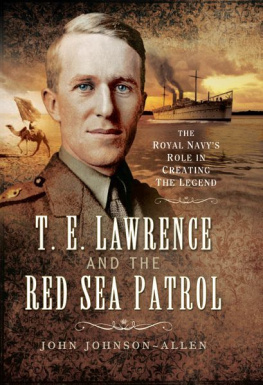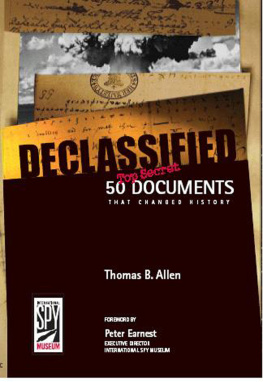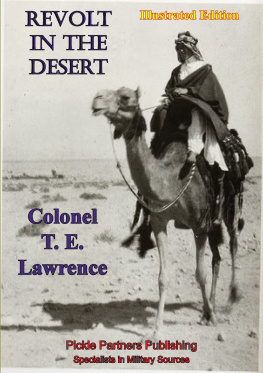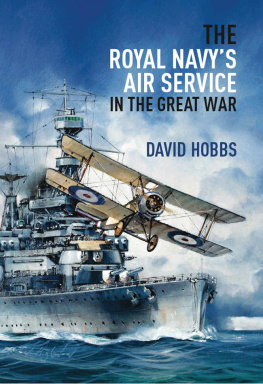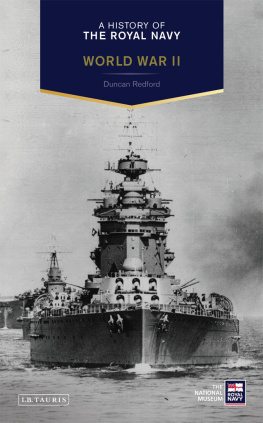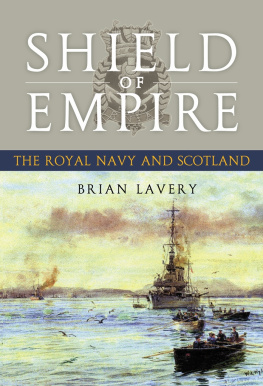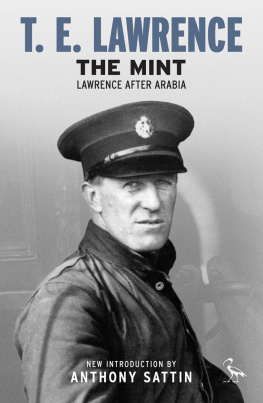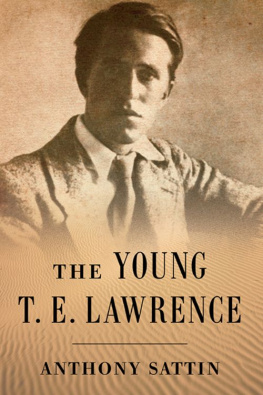Dedicated to June Oliver, whose drawings start each chapter, but who died too soon to see the book.
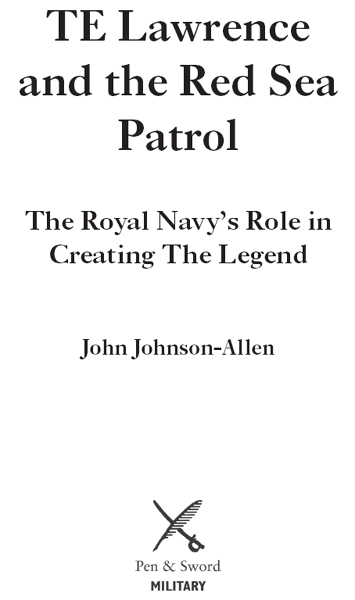
First published in Great Britain in 2015 by
Pen & Sword Military
an imprint of
Pen & Sword Books Ltd
47 Church Street
Barnsley
South Yorkshire
S70 2AS
Copyright John Johnson-Allen 2015
ISBN: 978 1 47383 800 0
EPUB ISBN: 978 1 47385 961 6
PRC ISBN: 978 1 47385 960 9
The right of John Johnson-Allen to be identified as the Author
of this Work has been asserted by him in accordance with the
Copyright, Designs and Patents Act 1988.
A CIP catalogue record for this book is available from the British
Library
All rights reserved. No part of this book may be reproduced or
transmitted in any form or by any means, electronic or mechanical
including photocopying, recording or by any information storage
and retrieval system, without permission from the Publisher in
writing.
Typeset in Ehrhardt by
Mac Style Ltd, Bridlington, East Yorkshire
Printed and bound in the UK by CPI Group (UK) Ltd,
Croydon, CRO 4YY
Pen & Sword Books Ltd incorporates the imprints of Pen & Sword
Archaeology, Atlas, Aviation, Battleground, Discovery, Family
History, History, Maritime, Military, Naval, Politics, Railways,
Select, Transport, True Crime, and Fiction, Frontline Books, Leo
Cooper, Praetorian Press, Seaforth Publishing and Wharncliffe.
For a complete list of Pen & Sword titles please contact
PEN & SWORD BOOKS LIMITED
47 Church Street, Barnsley, South Yorkshire, S70 2AS, England
E-mail:
Website: www.pen-and-sword.co.uk
Contents
Acknowledgements
For their assistance I would like to thank:
Vice-Admiral Sir Jeremy Blackham KCB for help with the Naval Review and the Foreword.
Captain Jeremy Carew OBE RFA for information and pictures relating to his grandfather.
The Earl of Cork and Orrery for permission to use photographs from the family archive.
Edward Chaplin CMG MVO for sharing his knowledge on the Middle East.
Churchill College Archive Centre, Cambridge, for help with the Wemyss archive.
Commander T. Lilley PhD MA for help with Naval matters of manning.
June Oliver, for her illustrations.
Mr R. Partis for help with steam cutters.
Quotes from Admiralty Pilots and illustrations were sourced from the UK Hygrographic Office.
Ian Killick, Liz Hill and Hannah Newbery of the Hydrographic Department Archive Department were of great and enthusiastic assistance.
Henry Wilson, Matt Jones and Barnaby Blacker of Pen and Sword, for their help and support.
The staff of the National Archive and the British Library.
And lastly, my wife Claire who helped with research and supported me wholeheartedly throughout.
I take all responsibility for errors that may have appeared. All possible effort has been taken, where copyright for illustrations was an issue, to discover the original owner.
Foreword
Jonathan Richard Boyle, Earl of Cork and Orrery
T he First World War introduced some unlikely participants to one another and none more so than the relationship which grew up between the Royal Navy and the Arab Nation. The necessity to defend the Suez Canal and to confront the Turkish Ottoman Empire once it had declared its hand as an ally of Germany gave rise to a side-show in Arabia which generated another sideshow within a side-show in the form of the Red Sea Patrol. This unique operation, conducted under the auspices of the Commander-in-Chief East Indies station (which perhaps demonstrates the low level of importance attached to it from the beginning), was led through its most important phase by my great uncle, Captain W. H. D. Boyle, who was appointed to command HMS Fox in late 1915. In hindsight, it was one of the earliest successful attempts by a maritime power to project its influence inland beyond the littoral along which it was operating. The use of amphibious forces and of air power acting in concert were pioneered in this campaign, and gave rise to the enormous Joint Maritime structures of the second World War, and which we see so often deployed today. Indeed, littoral force projection is one of the main reasons cited today for the construction of new aircraft carriers in the UK.
It is also memorable as the beginning of Arab self-determination, although this was largely overridden by the secret Sykes-Picot agreement of 1916. This agreement arguably led eventually to the conflicts which surround us today. In attempting to ensure that the Arabs rose up and evicted their overlords, the Turks, the British opened the genies bottle and gave the Middle East an identity. As a means of getting rid of the Turks by proxy this was only partially successful, as British and allied troops did most of the serious fighting, but they were careful to recognise religious sensitivities and to proceed with great caution where matters of custom and culture were concerned. The British had, however, broken the promises earlier made to King Hussein (the Sharif of Mecca) by the governor of Egypt, Sir Henry McMahon. This was later underlined by the Balfour Declaration of 1917.
Boyle was an astute political operator, and had made a point of cultivating excellent contacts within the military and political hierarchies. He was the same age as Churchill and knew him well; many senior Naval Officers fell within his circle of acquaintances, and his wifes family connections were excellent. He was therefore able to use his considerable charm and huge energy to achieve great things. His appointment to HMS Fox may have disappointed him (almost the slowest and oldest ship commanded by a Captain in the Royal Navy) but one can see the thought process at the Admiralty which led to it. He had made a thorough nuisance of himself demanding to be released from his desk job as Naval Attach in Rome so that he could go to sea and do something which he would have described as useful. The effectively independent Red Sea command was an obvious place to use someone possessing his initiative and energetic character. It also made him especially useful in roles requiring careful political handling. As a result, he was able to conduct one of the most influential maritime campaigns of the War, influencing events ashore with the minimum of force.
The motley collection of ships which characterised the Red Sea Patrol squadron were drawn from a variety of sources, but were surprisingly well suited to their task. The old cruisers had usefully large guns to act as mobile artillery and, more importantly, large crews so that the training and arming of significant landing parties was possible. The armed merchant vessels had a variety of talents, but the three Indian Marine troopships were ideal for the varied role of transporting stores, troops, animals and passengers. The small monitors which were added in the later stages of the revolt were perfectly suited for guardship duties. The astute use of the relatively new technology of radio (WT) communication made the whole thing possible, since operating along 1,200 miles of coastline would have been very difficult without it. Good relations between senior officers ashore and afloat existed, and the general will to succeed enabled Lawrence to succeed against all the odds in his initial efforts to persuade the various Arab factions to combine into some sort of a whole. The benign and helpful regime established by Admiral Wemyss, the C-in-C East Indies, enabled Boyle to provide the effective support which Lawrence needed. The objectives of the Admirals command were to secure Egypt, the Red Sea, and the Suez Canal, to project maritime power in the Red Sea Littoral in support of the Arab Revolt, and in particular to wear down the forces of the Turks, and to promote Britains image as a friend of the Islamic peoples within and without the British Empire. In all of these he succeeded, and was rewarded with the important post of First Sea Lord when he returned to Britain.
Next page
